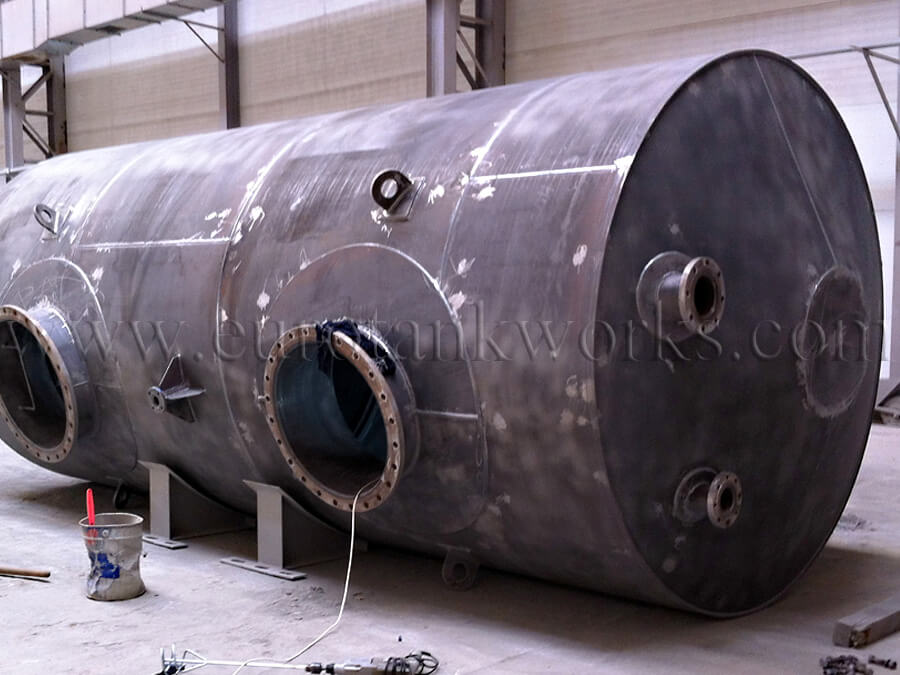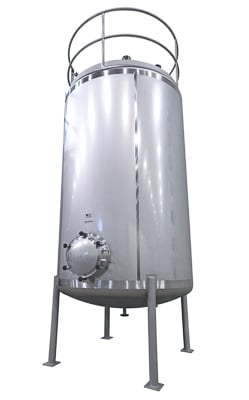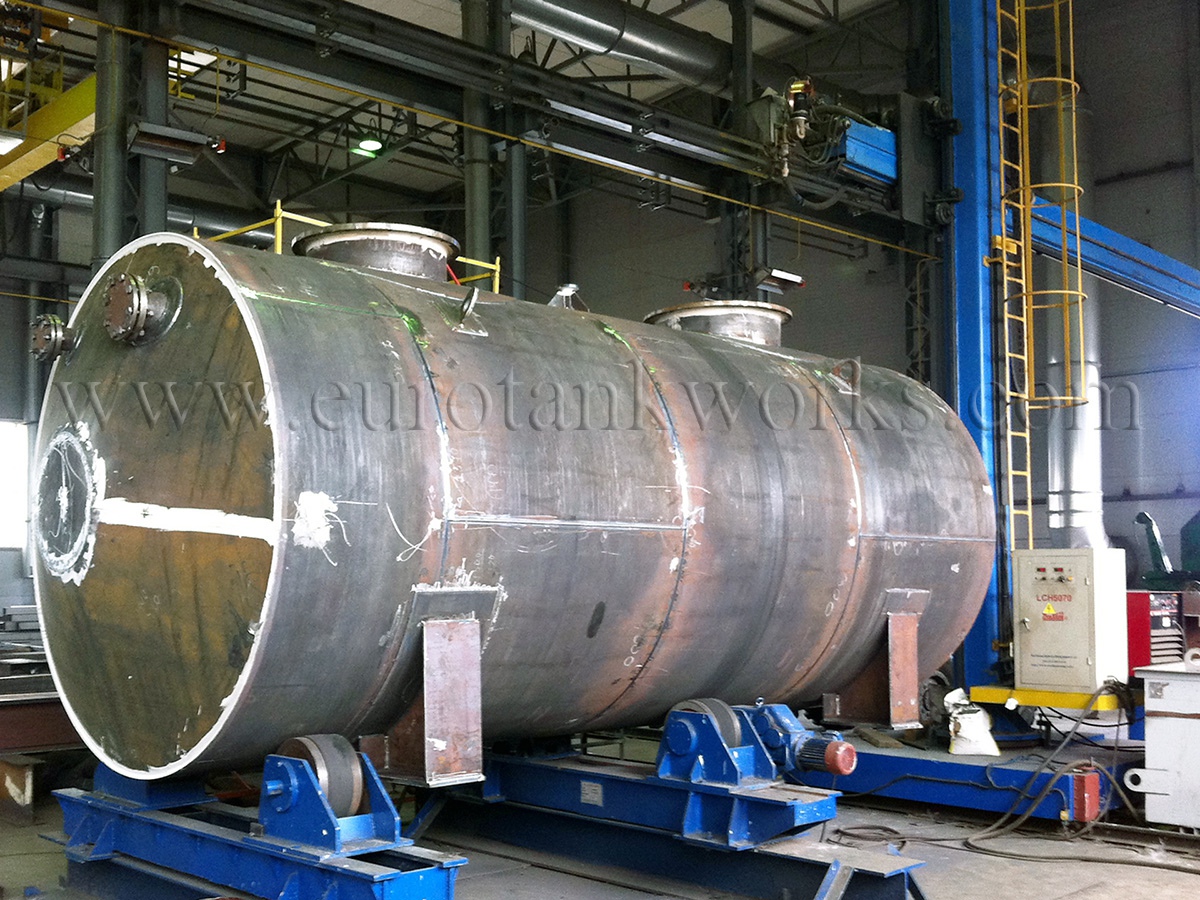The Future of Storage Tank Manufacturing: Fads and Technologies to Enjoy
The storage tank manufacturing industry is on the cusp of a critical development, driven by arising trends in smart materials, automation, and sustainability. As markets progressively focus on ecological duty, technologies such as green compounds and IoT-driven tracking systems are reshaping functional paradigms. On top of that, the expanding demand for customization and modular layouts suggests a shift in the direction of more versatile manufacturing practices. Understanding these patterns not only highlights the challenges ahead but also discloses opportunities that might redefine the landscape of storage tank manufacturing in the coming years. What ramifications might these innovations hold for sector stakeholders?
Developments in Smart Products
In the last few years, the storage tank manufacturing industry has actually witnessed a substantial uptick in the fostering of smart materials, revolutionizing style and performance. Smart materials, which can respond dynamically to ecological adjustments, have actually enabled manufacturers to develop tanks that are not just extra sturdy yet additionally extra effective in their functional capacities.
One significant advancement is the assimilation of shape memory alloys and polymers that can adjust to varying stress and temperatures. This adaptability enhances the architectural integrity of containers, minimizing the danger of failures and leakages (Texas Oil & Gas Storage Tank Fabrication Authority). Furthermore, these materials often display self-healing homes, which better prolongs the life-span of tank, lessening upkeep costs and improving security
The incorporation of sensors within wise products allows for real-time tracking of storage tank conditions, providing crucial data that aids in anticipating upkeep and danger management. This data-driven approach not just enhances functional performance but also lines up with environmental sustainability objectives by optimizing source use and avoiding spills.
Increase of Automation Technologies
The surge of automation modern technologies is changing storage tank manufacturing by incorporating robotics into production procedures, boosting efficiency and precision. Additionally, the deployment of clever sensing units makes it possible for real-time monitoring, making sure top quality control and security standards are satisfied. AI-driven procedure optimization better enhances operations, lowering costs and enhancing overall efficiency in the sector.
Robotics Integration in Manufacturing
Robotics assimilation is reinventing the production landscape, particularly in the storage tank market. As manufacturers undertaking for boosted efficiency and accuracy, robotics innovations are becoming vital tools for streamlining production procedures. Automated systems are capable of executing repeated tasks with higher speed and accuracy than human labor, lowering the likelihood of errors and enhancing general item quality.
One of the essential benefits of robotic assimilation is the capacity to enhance process. Automated robotic arms can deal with hefty materials, weld components, and conduct inspections, which decreases physical stress on workers and reduces downtime. This shift not just improves safety and security yet also enables human workers to concentrate on more complex and value-added tasks.
Furthermore, robotics can help with flexible production, enabling companies to adapt rapidly to altering market needs - Oil & Gas Storage Tank Fabrication. Advanced programming allows robotics to conveniently switch over in between different tasks and items, which is specifically advantageous in an industry where customization is progressively preferred
As robotics innovation continues to progress, manufacturers can expect boosted abilities, including improved device finding out formulas and augmented truth applications, further driving performance in storage tank manufacturing and establishing new criteria for the industry.
Smart Sensors Deployment

In addition, the data gathered from these sensing units can be leveraged to maximize the supply chain, making certain that products are readily available when required while decreasing waste. This level of understanding permits manufacturers to respond quickly to transforming conditions and consumer demands, improving general performance.
In addition, clever sensing units contribute to enhanced regulative compliance by constantly guaranteeing and keeping track of environmental variables adherence to security requirements. As the market advances in the direction of even more sustainable methods, the capacity to keep track of exhausts and resource consumption in real-time is indispensable.
AI-Driven Process Optimization
Manufacturers in the storage tank sector are progressively harnessing the power of AI-driven process optimization to improve functional efficiency and decision-making capabilities. By integrating advanced algorithms and artificial intelligence techniques, firms can evaluate huge quantities of data produced throughout the manufacturing process. This data-driven technique makes it possible for real-time surveillance of manufacturing metrics, resulting in more enlightened choices and prompt treatments.
AI modern technologies assist in predictive upkeep, permitting manufacturers to anticipate devices failings prior to they take place, therefore lowering downtime and upkeep expenses. Additionally, these systems can maximize source appropriation by evaluating manufacturing patterns and adjusting workflows, guaranteeing that materials and labor are utilized effectively.
AI-driven optimization enhances high quality control by identifying possible issues throughout the manufacturing process. Automated inspections powered by AI can swiftly spot incongruities, making sure that just products fulfilling rigid high quality standards proceed via the production line.
As the storage tank industry remains to accept automation, AI-driven procedure optimization stands out as a transformative pressure, driving development and competitiveness. By leveraging these modern technologies, manufacturers can not only simplify procedures however likewise adjust swiftly to market demands, positioning themselves for lasting development in a progressively intricate production landscape.
Concentrate On Sustainability Practices
As the storage tank manufacturing industry evolves, a considerable emphasis is put on sustainability methods. This consists of the adoption of environment-friendly materials, the execution of energy-efficient production processes, and the integration of circular economic climate principles. By prioritizing these campaigns, manufacturers not only reduce their ecological effect yet likewise improve the longevity and performance of their products.
Eco-friendly Products Fostering
Significantly, the storage tank manufacturing sector is embracing environmentally friendly products as a basic facet of sustainability practices. This change is driven by enhanced ecological recognition and governing stress, motivating manufacturers to seek options that decrease eco-friendly impact.
Naturally degradable compounds and recycled steels are gaining traction, providing both performance and lower carbon impacts. Making use of high-recycled-content steel not just lowers the need for virgin products however also enhances the total sustainability of the product lifecycle. Furthermore, manufacturers are discovering bio-based materials that give sturdiness while being less unsafe to the setting.
The fostering of green finishes and finishes, which are free from unpredictable organic substances (VOCs), reflects the market's commitment to minimizing air pollution and advertising healthier working problems. These developments not only align with global sustainability objectives but additionally meet the growing market need for greener items.
The assimilation of environmentally friendly products in storage tank manufacturing is not merely a pattern; it stands for a proactive technique towards responsible production that prioritizes both environmental stewardship and financial stability, setting a brand-new criterion for future advancements in the sector.
Energy-efficient Manufacturing Processes
There is a growing acknowledgment within the storage tank manufacturing sector of the relevance of energy-efficient processes as a necessary element of sustainable methods. As the market deals with enhancing pressure to minimize its carbon impact, manufacturers are carrying out cutting-edge innovations and methodologies focused on reducing energy consumption throughout the production cycle.
One significant fad is the adoption of advanced manufacturing strategies such as lean production and automation. These approaches simplify procedures, decrease waste, and improve performance, while additionally lowering energy use. Additionally, the assimilation of renewable resource sources, such as solar and wind power, right into manufacturing facilities is coming to be more widespread, permitting companies to operate sustainably and decrease reliance on nonrenewable fuel sources.
Moreover, energy-efficient equipment and devices are being prioritized in new financial investments, as manufacturers seek to optimize their power consumption. Using power management systems enables real-time surveillance and evaluation, facilitating continuous improvement in energy effectiveness.
Round Economy Assimilation
A noteworthy change in the direction of round economic climate assimilation is changing sustainability techniques within the storage tank manufacturing field. This approach highlights the relevance of source effectiveness, waste reduction, and the recycling of materials throughout the manufacturing lifecycle. By taking on circular concepts, manufacturers are significantly concentrated on making tanks that focus on long life, recyclability, and repairability.
As part of this adjustment, companies are discovering cutting-edge materials and production approaches that reduce ecological effect. The consolidation of recycled metals and plastics not only minimizes the need for virgin sources but likewise reduces carbon discharges connected with removal and handling. In addition, manufacturers are carrying out take-back plans that assist in the refurbishment and recycling of end-of-life tanks, thus closing the loophole in the manufacturing cycle.
Partnership among stakeholders, including suppliers and consumers, is crucial for cultivating a round economic climate (Storage Tank Manufacturing). This collaboration enables the sharing of ideal practices and encourages the advancement of sustainable supply chains. Ultimately, integrating round economy concepts into storage tank production not just enhances ecological stewardship but likewise positions firms to meet developing regulatory standards and consumer expectations for sustainability
Boosted Security Protocols
In today's production landscape, enhanced safety methods have ended up being crucial for storage tank manufacturers. The industry deals with increasing regulative scrutiny and needs for higher safety requirements due to the possible risks related to the storage of hazardous materials. Manufacturers are taking on a multifaceted approach to improve security procedures throughout the production procedure.
One considerable development is the implementation of innovative threat assessment devices that recognize possible risks throughout the design and production phases. These tools facilitate proactive steps to minimize risks prior to they rise into important concerns. Furthermore, manufacturers are purchasing employee training programs that emphasize safety techniques, ensuring that all workers visit this page are fluent in emergency procedures and tools handling.
In addition, there is a growing focus on making use of high-grade materials and cutting-edge styles that enhance structural integrity and decrease the likelihood of failures or leakages. Routine maintenance checks and extensive testing methods are likewise being incorporated right into the production lifecycle to guarantee compliance with security policies.
Combination of IoT Solutions

IoT devices promote predictive maintenance, which lessens downtime and expands the life expectancy of storage tanks. By assessing information collected from sensors, manufacturers can execute and anticipate potential failings upkeep activities before critical problems develop. This aggressive strategy not only conserves prices but likewise assures compliance with security regulations.
Additionally, IoT combination supports better inventory monitoring by providing accurate, real-time data on saved products. Texas Oil & Gas Storage Tank Fabrication Authority. This capacity aids manufacturers enhance their supply chains, guaranteeing that necessary resources are readily available when needed, thus boosting total performance
The application of IoT options makes it possible for enhanced communication between storage tanks and centralized monitoring systems, enhancing procedures. As the storage tank manufacturing market continues to adopt IoT modern technologies, we can expect substantial advancements in security procedures and operational performances, eventually causing more resilient manufacturing practices.
Personalization and Modular Layout
Flexibility in design has actually become a cornerstone of modern-day storage tank manufacturing as customization and modular design options gain traction. The progressing requirements of industries such as oil and gas, chemicals, and water administration necessitate tailored solutions that suit particular functional demands. Personalization allows manufacturers to produce containers that satisfy one-of-a-kind specs relating to size, form, capability, and product, guaranteeing peak efficiency and effectiveness.
Modular layout, on the various other hand, allows for the assembly of pre-fabricated parts, leading to significant time and expense savings. This method helps with quick deployment and scalability, allowing services to adapt their storage abilities in action to changing need. Additionally, modular systems can be easily broadened or reconfigured, reducing downtime and boosting functional flexibility.
The integration of sophisticated production innovations, such as 3D printing and computer-aided style (CAD), further boosts modification opportunities. These innovations make it possible for accurate design and quick prototyping, enabling for fast adjustments and iterations throughout the design process.

Governing Adjustments and Conformity
Regulatory modifications and compliance demands regularly shape the landscape of storage tank production, compelling manufacturers to continue to be attentive and adaptable. With boosting ecological worries and the push for sustainable techniques, regulatory bodies are implementing more stringent guidelines concerning discharges, products, and safety and security requirements. The U.S. Environmental Protection Agency (EPA) and different state agencies are revising regulations that govern the layout and setup of storage containers, particularly those utilized for hazardous materials.
Manufacturers need to not just follow existing policies however also expect future modifications, requiring continuous investment in r & d. This includes embracing innovative products and modern technologies that improve tank stability and environmental management. Furthermore, compliance with laws such as the Spill Avoidance, Control, and Countermeasure (SPCC) rule is vital for manufacturers to prevent lawful obligations and substantial penalties.
Furthermore, the combination of electronic technologies helps with compliance tracking and coverage, enabling manufacturers to preserve openness and efficiency. As regulations remain to develop, staying notified and aggressive is crucial for storage tank manufacturers to assure conformity, protect public health, and secure the environment, inevitably shaping a much more sustainable market.
Frequently Asked Inquiries

What Are the Most Usual Materials Made Use Of in Storage Tank Manufacturing?
The most typical materials made use of in storage tank manufacturing include carbon steel, stainless-steel, and fiberglass. Each material provides distinctive benefits, such as toughness, corrosion resistance, and versatility to different storage needs and environmental problems.
How Do Storage Space Tanks Influence Citizen Ecosystems During Installation?
Tank setup can disrupt regional environments by changing land usage, affecting water drainage patterns, and potentially introducing pollutants. Correct site evaluations and ecological administration techniques are necessary to mitigate these impacts and safeguard biodiversity.
What Is the Typical Lifespan of a Modern Storage Tank?
The typical life-span of a contemporary storage tank normally ranges from 20 to thirty years. Variables such as material high quality, ecological problems, and upkeep methods significantly influence longevity and total performance throughout their functional life expectancy.
How Do Manufacturers Make Certain Top Quality Control in Production?
Manufacturers guarantee top quality control via strenuous testing procedures, adherence to sector criteria, and constant surveillance throughout production (Storage Tank Manufacturing). Advanced innovations such as automation and real-time data analysis better boost consistency and dependability in storage tank production processes
What Are the Expenses Connected With Preserving Tank?
Maintaining tank includes different prices, including regular examinations, fixings, governing conformity, corrosion prevention, and potential environmental removal. These expenses can significantly affect general functional budgets and demand aggressive administration to ensure long-lasting efficiency and safety and security.
As manufacturers increasingly embrace automation innovations, the implementation of wise sensors is ending up being a crucial aspect of contemporary manufacturing procedures in the storage tank sector. Manufacturers in the storage tank industry are increasingly taking advantage of the power of AI-driven procedure optimization to enhance functional effectiveness and decision-making capabilities. Significantly, the storage space tank manufacturing industry is embracing environment-friendly materials as a fundamental element of sustainability methods. In today's production landscape, enhanced safety and security procedures have become important for storage space tank manufacturers. Regulatory adjustments and conformity demands often form the landscape of storage tank production, engaging manufacturers to continue to be cautious and versatile.